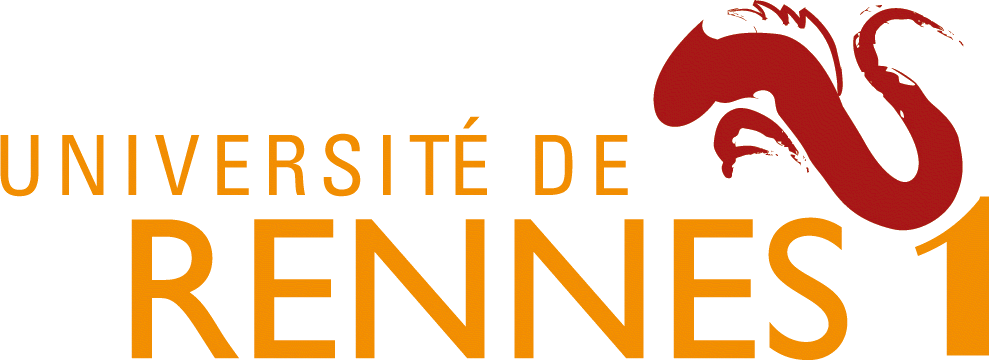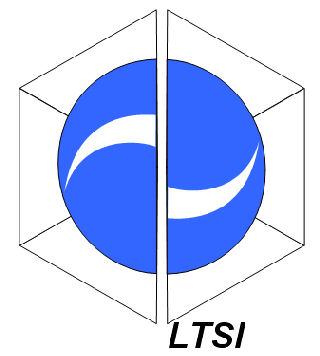News
Members
Publications
Software / Data
Job offers
Images / Videos
Collaborations
Conferences
Lab meetings: "Les partages de midi"
Practical information
Members Area
Next conferences we are in …


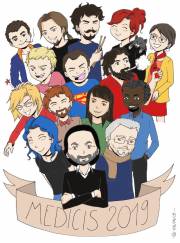
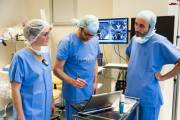
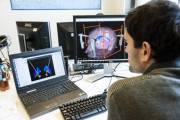
This is an old revision of the document!
The scientific objectives of this project, concerning the development of new medical image computing methods, deal with image fusion (registration and visualization), image segmentation and analysis, and management of image related information. In the past, we have acquired an expertise in this domain, in which we intend to develop new methods, while primarily promoting approaches based on statistical processes. In addition, since these methods are devoted (but not specific) to solve actual medical applications, a constant concern will be to build an evaluation framework at each stage of the methodological development process. Therefore, this topic will be present here as a transversal concern among the generic developments and the applications.
In this domain, the research will be more focused on new problems coming from the application. For instance, the mono and multimodal registration of ultrasound images is still an open problem. In this context we will look at new similarity measures to better take into account the nature of the echographic signal (e.g. the use of the Hellinger distance). Similarly, in the interventional theatre, new matching procedures will be required between for instance video, optical or biological images and the pre-operative images (CT, MRI, SPECT/PET, Angiography &). Some of these problems can be very challenging, for a number of new applications there is no existing solutions to solve these problems (e.g. fusion of biological images with interventional images and images coming from the planning).
In many contexts, a rigid transformation cannot account for the underlying phenomena. This is for instance true when observing evolving biological and physiological phenomena. Therefore, nonrigid registration methods (also called deformable registration) are needed. In this domain, we will pursue our efforts of the last five years, mainly in the following three directions. Non-rigid registration algorithms would benefit from the incorporation of statistical priors. These statistical priors can be expressed locally (for instance through a statistical analysis of segmented shapes) or globally (by learning statistics about deformation fields directly). Statistical priors (local and global) are useful to capture probable or relevant deformations. Non-rigid registration methods can be broadly sorted in two classes: geometric methods that rely on the extraction and matching of sparse anatomical structures and photometric methods that rely on image intensities directly. These two kinds of methods have their advantages and drawbacks. We propose to investigate further cooperative approaches where information of different nature (global, hybrid and local) could be mixed in a mathematical elegant way. Finally, our research will focus on a better modeling of the problems, mainly in two directions: firstly the relationship between the observed data (image intensities) and the variables (registration field) should be better understood. This should lead to more adapted similarity measures in specific application contexts (for instance when registering ultrasound images). Secondly, specific modeling of the deformation field will be useful in specific contexts (for instance when matter is disappearing, fluid mechanics models will be more adapted than classical regularized deformation fields).
This topic is very classical in computer vision. For the concern of medical image computing, we propose to focus on the development of new tools devoted to the restoration of corrupted images coming from the sources and to the segmentation of anatomical structures based on deformable shape models. In practice, we will pay more attention to algorithms involving statistical approaches.
New applications of medical imaging systems are parallel to the development or the evolution of new machinery which come with specific artifacts that are still only partially understood. This is the case for instance with high field MRI, 3D ultrasound imaging or other modalities. With regards to the images to process and analyze, these artifacts translate into geometric or intensity distortions that drastically affect not only the visual interpretation, but also most of the segmentation or registration algorithms, and the quantitative measures that follow. A better comprehension of these artifacts necessitates an increased dialogue between the physicists (who make the images), the computer scientists (who process the images) and the clinicians (who interpret the images). This should lead to define new, specifically-designed algorithms, based on statistical models taking into account the physics of the acquisition. As an example, correction of the bias field in Magnetic Resonance Imaging (MRI) requires to account for the underlying anatomy. For the concern of 3D ultrasound images, partially because of the challenging aspect of this problem, very few restoration schemes have been proposed. It is clear that only an approach accounting for the physics of the image formation could give an adequate response to this problem. This suggests coping with the use of a priori knowledge (e.g. an atlas or the statistical modeling of the image formation), and dealing better with partial volume effects or spatial coherence (e.g. by using Markovian models). Once these unknown parameters being modeled, well adapted estimation methods need to be defined (ML, MAP, measures from information theory&), and then relevant optimization schemes need to be chosen (EM algorithms, non-deterministic methods&). In practice, the primarily concerned applications will come from the domain of neuroimaging, and the registration between pre and intra-operative images (e.g. ultrasound vs. MRI). The new robotic platform will give also an adequate experimental workbench to validate these works. A difficult challenge in relation to this domain has to do with the computerized efficiency of the proposed methods especially for the concern of almost-real-time applications (e.g. per-operative imaging, robotic applications&). Another image restoration issue concerns the problem of augmented resolution. The accuracy of medical imaging systems is limited by the imaging system itself. Despite these limitations, superresolution algorithms need to be investigated so as to increase the quality of images. Superresolution methods consist in recovering a high-frequency image given a sequence of lowfrequency images. This sequence may be given by scanning the same anatomical structure different times (the MR image of the same subject acquired N times) or from different view points (e.g. different views of free-hand 3D ultrasound). The sequence of images needs to be registered so as to match homologous resolution cells.
The aim of this topic is to propose a generic framework to build probabilistic shape models in a 3D+t space applied to biomedical images with a particular emphasis on the problem of modeling anatomical and functional structures in neuroimaging (functional delineations, cortical or deep brain structures). Based on our recent contributions in this domain [5-7], we propose to bring a methodological framework to segment 3D shapes and to model, in space and time, shape descriptors which can be applied to new extracted shapes; this with the aim of proposing new quantification tools in biomedical imaging. The objective is to define a unified framework combining statistical shape models resulting from various observations (for example several subjects) and variational approaches allowing the segmentation of these forms by means of deformable models with variable topology and co-dimension. This hybrid concept of collaboration between statistical modeling approaches of a set of forms and variational approaches for their segmentation is an original and competitive domain; it is promising in its capacities to handle various quantification and modeling problems of biomedical image contents, which are very open problems.
Nowadays, statistical analysis occupies a central place for the study of brain anatomy and function in medical imaging. It is indeed a question of exploiting gigantic image data base, on which we look to reveal the relevant information: measure the anatomical variability to discover better what deviates from it, to measure the noise to discover an activation, etc., in brief, to distinguish what is statistically significant of what is not. Below are summarized some important problems and some ways we propose to develop.
Statistical analysis tools play a key role in the study of the anatomy and function of the brain. Typically, statisticians aim at extracting the significant information hidden below the noise and/or the natural variability. Some specific tools exist for the comparison of vector fields or geometrical landmarks. Some others have been developed for the analysis of functional data (PET, fMRI…). Thus, statistics are generally either spatial, or temporal. There is an increasing need for the development of statistics that consider time and space simultaneously. Applications could include the follow-up of multiple sclerosis in MR images or the tracking of a deformable structure in an ultrasound image sequence.
One of the major problems in medical image analysis is to assist the clinician to interpret and exploit the high dimensionality of the images especially when he needs to confront his interpretation with classical cases (previous or reference cases). A solution to deal with this problem is to go through the use of an atlas which can represent a relevant a priori knowledge. Probabilistic atlases have been studied to tackle this problem but most of the time they rely on global references which are not always relevant or precise enough, to solve some very complex problems like the interpretation of inter individual variations of brain anatomy and function. We already have a large background in this domain and we have recently proposed an original framework made of cooperation between global and local references to build such probabilistic atlases[1, 8, 9]. We will pursue this effort especially for developing a probabilistic atlas capable of labelling highly variable structure (anatomical and functional ones), or for defining relevant indexes for using with data bases systems.
One of the major problems in quantitative image analysis is to be able to perform clustering based on descriptors extracted from images. This can be done either by using supervised or unsupervised algorithms. One of our objectives will be to develop statistical analysis methods in order to discriminate groups of data for clinical and medical research purposes (e.g. pathologic vs. normal feature, male vs. female, right-handed vs. left-handed, etc.), these data coming from descriptors extracted by using image analysis procedures (e.g. shapes, measurements, volumes, etc.).
As said before this topic follows the work we are currently doing in the Neurobase project and will be covered with tight collaboration with Bernard Gibaud from the IDM Laboratory. Two of the major concerns of researchers and clinicians involved in neuroimaging experiments are on one hand, to manage internally the huge quantity of produced data ( H 1 Gb per subject) and, on the other hand, to be able to confront their experiences and the methods they develop, with those existing in other centers or moreover with those described in publications. Furthermore, and this is more particularly true for clinical centers (with limited staff capabilities), the researchers or the clinicians have great difficulties to set up large-scale experiments which are self-important, largely because of lack of human beings and capacities of recruiting subjects. Besides, the statistical validity of the results is sometimes insufficient (the rate of “false negative” is probably not negligible). Finally, it is related to the concern to better insure the profitability of the existing and expensive equipments (for the purchase as well as for the use), by facilitating their access to a wider users community. For all these reasons, we think that the pooling of the experimental results, through a network between collaborative centers, will allow widening the scientific achievement of the conducted experimental studies. This will also allow increasing the possible panel of people involved in neuroimaging studies, while protecting the excellence of the supplied work. This action is currently managed through the Neurobase project (an ACI funded by the French ministry of research), wherein the TexMex team is also involved. The action will be largely reinforced with the future evolution.

